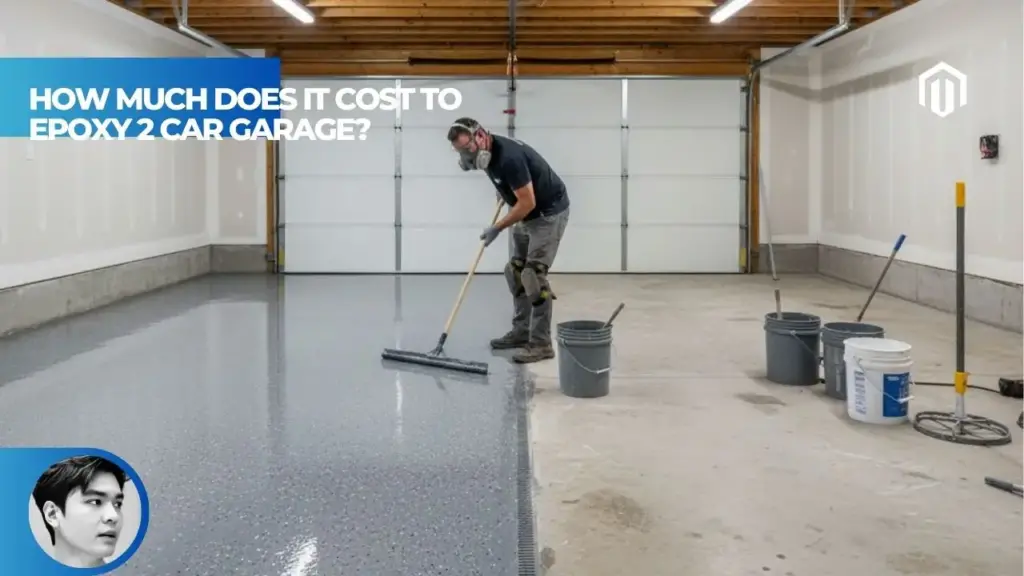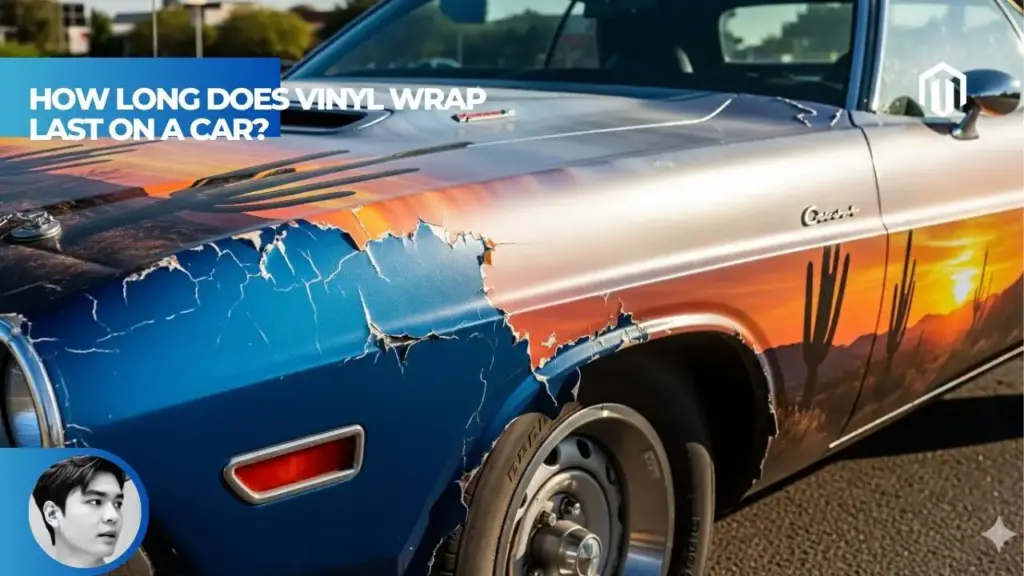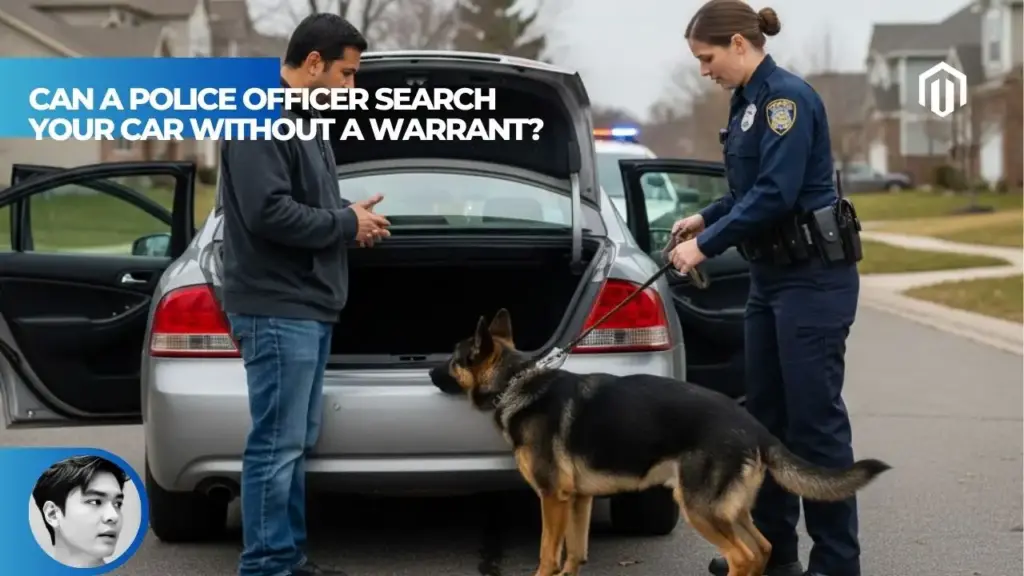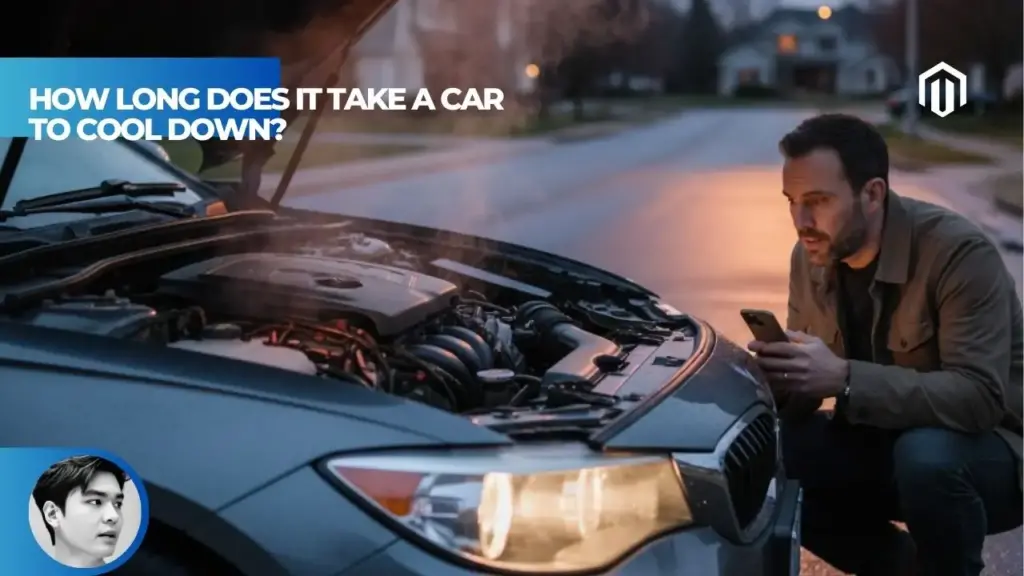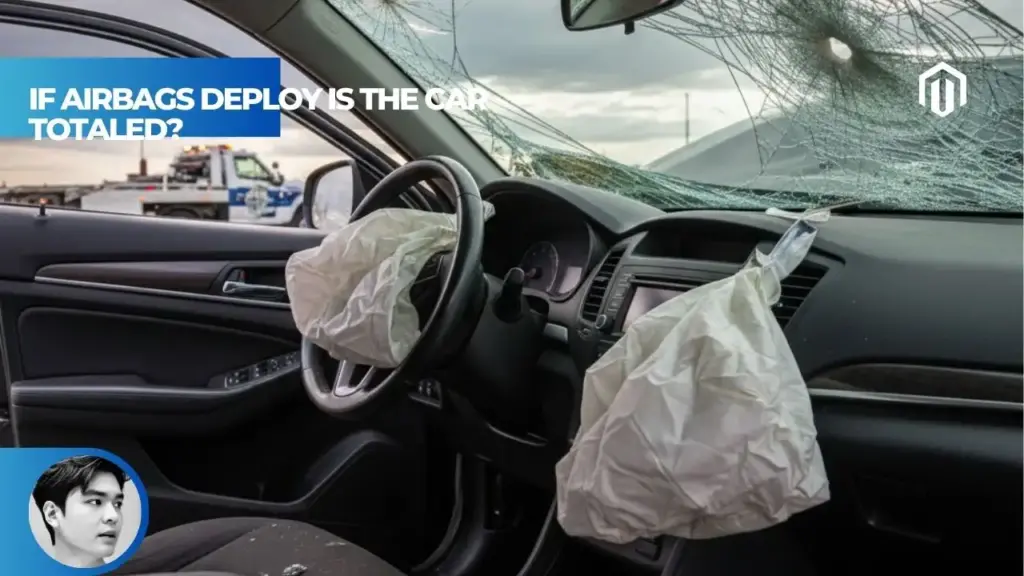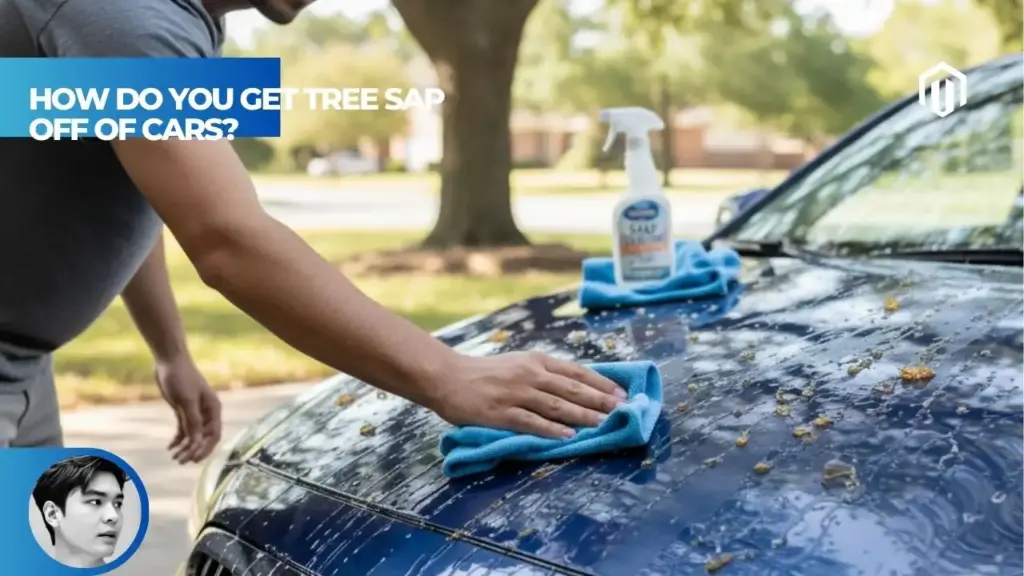You may also like:
- 【Explained】If Airbags Deploy, Is the Car Totaled? (The 2025 Cost vs. Value Guide)
- 【Explained】When Does the 2-Hour Car Seat Rule End for Babies?
- 【Explained】Do You Need Full Coverage on a Financed Car? (The Lender Requirement Explained)
- 【Explained】Can You Jump Start a Car in the Rain? (A Step-by-Step Guide)
- 【Explained】Can a Police Officer Search Your Car Without a Warrant? (The 5 Legal Exceptions)
When your insurance company declares your car totaled but it’s still drivable, you have two main options: accept the full payout and surrender the vehicle, or keep it with a reduced payment (minus salvage value) and receive a salvage title. A totaled car with a salvage title cannot be legally driven on public roads until repairs are completed and it passes state inspection to receive a rebuilt title.

Understanding What “Totaled But Drivable” Means
The term “totaled” confuses many drivers because it suggests complete destruction, yet their car still runs perfectly fine. This disconnect between insurance terminology and physical reality creates uncertainty about what happens next in the claims process.
Why Did Insurance Total My Drivable Car
Insurance companies total vehicles based purely on economic calculations, not mechanical functionality. Your car might drive perfectly, but if repair costs exceed certain thresholds, it becomes a total loss in insurance terms[1]. Modern vehicles with advanced electronics and safety systems can reach total loss status from relatively minor collisions.
The proliferation of expensive sensors, cameras, and computer modules means that even cosmetic damage can trigger astronomical repair estimates. According to Autvex research, vehicles are totaled five times more frequently than in 1980 due to complex technology costs[2].
What Does a Total Loss Mean (Economic Total Loss)
An economic total loss occurs when the financial equation tips against repairing the vehicle. Insurance companies use sophisticated algorithms to determine when repairs become economically unfeasible, regardless of the car’s drivability[1].
The calculation involves three key components:
- Actual Cash Value (ACV) – your car’s worth before damage
- Salvage value – what the damaged car sells for at auction
- Repair costs – estimated expense to restore pre-accident condition
When repair costs approach or exceed the difference between ACV and salvage value, insurers declare total loss to minimize their payout obligation.
Repair Cost Exceeds Actual Cash Value (ACV)
The actual cash value represents your vehicle’s fair market value immediately before the accident, accounting for depreciation, mileage, and condition. Insurance companies determine ACV using various sources including local dealer listings, auction results, and valuation guides[3].
Consider a scenario where your 2020 vehicle has an ACV of $15,000 and sustains $12,000 in damage. If the salvage value equals $4,000, the insurer faces paying $12,000 for repairs versus $11,000 ($15,000 minus $4,000) for total loss. They’ll choose the cheaper option.
Total Loss Threshold by State (70-80% Rule)
States regulate when insurers must declare vehicles totaled through specific thresholds or formulas. Most states use percentage thresholds ranging from 60% to 100% of ACV[4].
| State Examples | Threshold | Method |
|---|---|---|
| Oklahoma | 60% | Lowest threshold |
| Nevada | 65% | Below average |
| Wisconsin, Minnesota | 70% | Common threshold |
| Alabama, Kansas, Maryland | 75% | Most common |
| Florida, Missouri, Oregon | 80% | Above average |
| Texas, Colorado | 100% | Highest threshold |
Twenty-one states use the “Total Loss Formula” (TLF) instead, where damage plus salvage value must exceed ACV. Understanding how many miles is good for a used car helps evaluate whether keeping a totaled vehicle makes sense.
Your Two Main Options When Your Car Is Totaled
Once your insurer declares total loss, you face a critical decision that impacts both immediate finances and future vehicle ownership. Each option carries distinct advantages and challenges.
Option A: Surrender the Vehicle (Relinquish)
Surrendering your totaled car represents the simplest path forward for most owners. You receive the full ACV minus your deductible, and the insurance company handles all logistics[1]. The insurer takes possession, manages title transfer, and sells the vehicle at salvage auction.
This option provides maximum payout and minimal hassle. You avoid dealing with salvage titles, repair complexities, and future insurance challenges. The clean break allows immediate vehicle replacement without ongoing obligations.
Benefits of surrendering include:
- Full ACV payment (minus deductible)
- No repair responsibilities
- Clean title on next vehicle
- Simplified insurance process
Option B: Keep the Vehicle (Owner Retention)
Owner retention allows you to keep your totaled but drivable car, though with significant caveats. The insurance company deducts the salvage value from your settlement, typically reducing payment by 20-40%[2].
If your car’s ACV equals $15,000 with a $3,000 salvage value, you’d receive only $12,000 (minus deductible) while keeping the damaged vehicle. This option suits situations where:
- Repairs cost less than the salvage value deduction
- The vehicle holds sentimental value
- You have mechanical expertise for DIY repairs
- Damage is purely cosmetic
How to Buy Back a Totaled Car from Insurance
The buyback process begins by notifying your adjuster before accepting the settlement. Request the specific salvage value calculation and negotiate if possible[3]. Some insurers allow salvage value negotiation, particularly if you can demonstrate lower auction values.
Required steps for buyback:
- Inform adjuster of retention intent
- Review salvage value deduction
- Accept reduced settlement
- Receive salvage title documentation
- Comply with state DMV requirements
Insurance Payout If I Keep My Car (ACV Minus Salvage Value)
The retained salvage calculation significantly impacts your financial position. Your payout equals: ACV – Deductible – Salvage Value = Settlement[1].
Example calculation:
- Vehicle ACV: $20,000
- Insurance deductible: $500
- Salvage value: $5,000
- Your payout: $14,500
This $5,500 reduction from full settlement must be weighed against repair costs and future limitations. Consider how long does it take to buy a car if you’re planning to purchase a replacement instead.
The Legal and Title Process for Totaled Cars
Title status determines whether your totaled car can legally operate on public roads. Understanding the progression from clean to salvage to rebuilt titles proves essential for owner retention decisions.
What Is a Salvage Title
A salvage title brands your vehicle as a total loss in official records, fundamentally altering its legal status. Once issued, this designation follows the vehicle permanently through all future sales and registrations[5].
Salvage titles arise from various damage sources:
- Collision damage exceeding thresholds
- Flood or water damage
- Fire damage
- Theft recovery after insurance payout
- Vandalism exceeding repair thresholds
The salvage brand appears on all vehicle history reports, significantly impacting resale value and insurability regardless of repair quality.
Can You Legally Drive a Car with a Salvage Title
No, vehicles with salvage titles cannot legally operate on public roads in any state. Law enforcement can impound salvage-titled vehicles found on public streets, and drivers face citations and liability issues[2].
The prohibition exists because salvage vehicles haven’t undergone safety inspections verifying roadworthiness. Driving illegally also voids any insurance coverage, leaving you fully liable for accidents.
What Is a Rebuilt Title vs Salvage Title
The crucial distinction between salvage and rebuilt titles determines legal drivability. Salvage titles indicate unrepaired total loss vehicles, while rebuilt titles certify completed repairs and passed inspections[5].
| Title Type | Legal to Drive | Insurance Available | Resale Impact |
|---|---|---|---|
| Clean | Yes | Full coverage | Normal value |
| Salvage | No | None | -60% to -80% |
| Rebuilt | Yes | Limited | -40% to -60% |
How to Get a Rebuilt Title (Salvage Vehicle Inspection)
Converting salvage to rebuilt title requires completing repairs and passing state inspections. Requirements vary significantly, with some states demanding extensive documentation while others conduct minimal review[6].
The inspection typically evaluates:
- Structural integrity
- Safety system functionality
- Brake system operation
- Lighting and signals
- Emission compliance (if applicable)
- VIN verification
- Theft check

Making Your Totaled Car Road Legal Again
Returning a salvage vehicle to road-legal status demands navigating complex state requirements and passing rigorous inspections. The 2025 BMW 2-Series exemplifies modern vehicles where electronic repairs can exceed mechanical costs.
How to Register a Salvage Vehicle
Registration cannot occur until the salvage title converts to rebuilt status. Initial steps involve documenting all repairs with receipts, photos, and professional certifications where required[4].
State DMVs typically require:
- Completed application forms
- Repair documentation and receipts
- Inspection certificates
- Title fees ($50-$200)
- Sales tax on parts (varies by state)
Salvage Vehicle Inspection Requirements
Inspection rigor varies dramatically between states. Some conduct thorough multi-point examinations while others perform cursory reviews. States like Ohio and Pennsylvania maintain strict standards, while others focus primarily on stolen parts verification[6].
Common inspection points include:
- Frame and unibody measurements
- Airbag deployment and replacement
- Seatbelt functionality
- Glass integrity
- Tire condition and size
- Exhaust system compliance
What Is a Revived Salvage Title
Some states use “revived salvage” terminology for rebuilt titles, though the concept remains identical. The vehicle passed inspection after salvage status and can legally operate with restrictions[4].
Revived/rebuilt titles permanently mark the vehicle’s history, affecting insurance and resale throughout its lifetime. Even pristine repairs cannot remove this designation.
State-Specific Safety and Anti-Theft Inspection
Many states emphasize anti-theft verification to prevent criminals from “washing” stolen vehicles through the salvage system. Inspectors verify VIN locations, check parts against theft databases, and confirm ownership documentation[3].
States requiring enhanced inspections:
- California: BAR inspection plus CHP verification
- New York: DMV inspection plus insurance examination
- Pennsylvania: Enhanced safety inspection
- Ohio: Multiple inspection stations required
Insurance Challenges After Total Loss
Securing insurance for salvage or rebuilt title vehicles presents unique challenges that impact both coverage availability and premium costs.
Can You Get Insurance on a Salvage Title Car
Insurance companies will not cover salvage title vehicles for road use since they’re not legally drivable. You can only obtain storage insurance or coverage during the repair process[1]. This creates a catch-22 where repairs must occur without comprehensive protection.
Storage-only policies typically cost $100-$300 annually and cover:
- Theft from storage location
- Fire damage
- Vandalism
- Weather damage (limited)
How to Insure a Rebuilt Title Car
Finding insurance for rebuilt titles requires shopping extensively, as many insurers refuse coverage entirely. Those accepting rebuilt titles often impose restrictions and higher premiums[2].
Insurers accepting rebuilt titles (with restrictions):
- State Farm: Case-by-case basis
- Progressive: Limited coverage
- Geico: Liability only in most states
- Farmers: Varies by state
Expect premium increases of 20-40% compared to clean title vehicles. Understanding does Audi charge for Apple CarPlay becomes relevant when considering technology features in replacement vehicles.
Is It Hard to Get Full Coverage on a Rebuilt Title
Securing comprehensive and collision coverage for rebuilt titles proves extremely difficult. Most insurers offer only liability coverage, leaving owners exposed to significant financial risk[5].
Insurance limitations include:
- No agreed value policies
- Reduced actual cash value calculations
- Exclusions for pre-existing damage
- Higher deductibles
- Required inspections
What Is GAP Insurance for Totaled Cars
GAP (Guaranteed Asset Protection) insurance covers the difference between your loan balance and the vehicle’s ACV when totaled. This proves crucial when financing, as depreciation often exceeds loan principal reduction[3].
GAP insurance becomes especially important for:
- New vehicle purchases (rapid depreciation)
- Long-term loans (72+ months)
- Low down payments
- Rebuilt title vehicles (uncertain values)
Financial Impact and Resale Value
The financial consequences of keeping a totaled vehicle extend far beyond the initial settlement reduction.
How Much Is a Rebuilt Title Car Worth
Rebuilt title vehicles suffer permanent value reduction of 40-60% compared to clean title equivalents[5]. This depreciation remains regardless of repair quality or subsequent maintenance.
A car worth $20,000 with a clean title might fetch only:
- Private sale: $8,000-$12,000
- Dealer trade: $6,000-$8,000
- Auction: $5,000-$7,000
Resale Value of a Rebuilt Title Car (40-60% Less)
The rebuilt title stigma creates substantial resale challenges beyond pure value reduction. Many dealers refuse rebuilt title trades entirely, while private buyers remain highly skeptical[6].
Resale obstacles include:
- Limited buyer pool
- Financing difficulties for buyers
- No certified pre-owned eligibility
- Warranty exclusions
- Interstate transfer complications
Research Audi Q7 years to avoid if considering specific used models instead of keeping your totaled vehicle.
Does Insurance Pay Out If I Still Owe Money
Insurance pays the ACV regardless of loan balance, potentially leaving you underwater. If you owe $18,000 but the ACV equals $15,000, you remain responsible for the $3,000 difference[1].
Loan scenarios with total loss:
- Loan less than ACV: Receive difference after payoff
- Loan equals ACV: Break even
- Loan exceeds ACV: Owe remaining balance
- With GAP insurance: Difference covered
How Is Salvage Value Calculated
Insurers determine salvage value through auction estimates and historical data. Factors include demand for parts, scrap metal prices, and regional market conditions[4].
Salvage value factors:
- Make, model, year
- Damage extent and type
- Parts demand
- Local auction prices
- Scrap metal values
Salvage typically ranges from 20-40% of ACV but can reach 50% for high-demand vehicles or minimal damage.
Negotiating Your Total Loss Settlement
Maximizing your settlement requires understanding the negotiation process and documenting your vehicle’s value effectively.
Negotiating a Total Loss Settlement
Insurance companies expect negotiation on total loss settlements. Their initial offer typically represents the lower range of acceptable values[3]. According to Autvex experts, successful negotiation can increase settlements by 5-15%.
Effective negotiation strategies:
- Research comparable vehicles in your area
- Document recent maintenance and upgrades
- Provide receipts for tires, batteries, or improvements
- Challenge any condition adjustments
- Request the full valuation report
- Consider hiring an independent appraiser
Pros and Cons of Keeping a Totaled Car
Pros:
- Retain familiar vehicle
- Save on sales tax for replacement
- Potential profit if damage is minor
- Avoid car shopping hassle
- Keep aftermarket modifications
Cons:
- Reduced insurance payout (20-40% less)
- Permanent value reduction (40-60%)
- Limited insurance coverage options
- Legal compliance complexities
- Safety concerns from hidden damage
- Difficult resale
Is It Worth It to Buy Back a Totaled Car
Buyback rarely makes financial sense unless damage is purely cosmetic or you possess professional repair capabilities. The combination of reduced payout, repair costs, insurance challenges, and value loss typically exceeds replacement vehicle costs[2].
Buyback might work if:
- Damage is superficial (hail, minor scrapes)
- You have free/cheap repair access
- Vehicle has high sentimental value
- Parts car for another project
- Specialized modifications present
Consider what is the towing capacity of an Audi Q7 if you need specific capabilities in your replacement vehicle.

Key Takeaways
- Insurance totals cars based on repair costs versus value, not drivability
- You can keep a totaled car but receive 20-40% less settlement
- Salvage title vehicles cannot legally drive until rebuilt title obtained
- Rebuilt titles permanently reduce value by 40-60%
- Most insurers only offer liability coverage on rebuilt titles
- State thresholds range from 60-100% of ACV for total loss
- GAP insurance covers loan-to-value differences when totaled
Decision Path / Next Steps
After your car is declared totaled but drivable, follow this strategic decision process:
- For Most Owners: Accept the full ACV payout and surrender the vehicle. Use the settlement to purchase a replacement with a clean title. This path offers maximum financial recovery and minimum complications. Research how long does it take to align a car for your new vehicle’s maintenance needs.
- For Minimal Damage: If damage is purely cosmetic (hail dents, scrapes) and you can repair cheaply, calculate whether the salvage value deduction exceeds repair costs. Factor in the permanent 40-60% value reduction before deciding.
- For Sentimental Value: When emotional attachment outweighs financial logic, prepare for the rebuilt title process. Budget for repairs, inspection fees, and increased insurance costs. The 2024 BMW 2-Series Gran Coupe offers modern alternatives worth considering.
- For Outstanding Loans: If you owe more than the ACV, GAP insurance becomes crucial. Without it, negotiate aggressively for maximum ACV and consider surrendering to minimize out-of-pocket losses.
FAQs
What happens if my car is totaled but still drivable?
You have two options: accept the full ACV payout and surrender the car, or keep it with reduced payout (minus salvage value) and receive a salvage title.
Can I keep my car if the insurance company totals it?
Yes, through owner retention you can buy back your totaled car, but you’ll receive less money and the car gets a salvage title.
Why did my insurance total my car if it only has cosmetic damage?
Insurance totals cars when repair costs exceed 70-80% of the vehicle’s ACV, regardless of whether damage is cosmetic or mechanical.
Is it legal to drive a car with a salvage title?
No, cars with salvage titles cannot be legally driven on public roads until repaired and converted to a rebuilt title through state inspection.
How do I “buy back” my totaled car from the insurance company?
Notify your insurer you want owner retention; they’ll deduct the salvage value from your settlement and transfer the salvage title to you.
How much does the insurance company pay me if I keep my totaled car?
You receive the ACV minus your deductible and minus the car’s salvage value (typically 20-40% of ACV).
What is the difference between a salvage title and a rebuilt title?
Salvage title means totaled and illegal to drive; rebuilt title means repairs completed, passed inspection, and legal to drive again.
How do I get a rebuilt title for my car?
Complete all repairs, pass your state’s safety/anti-theft inspection, submit paperwork to DMV, and pay required fees for title conversion.
Can I get full coverage insurance on a car with a rebuilt title?
Most insurers only offer liability coverage on rebuilt titles; comprehensive and collision coverage is rarely available or very expensive.
Is it worth it to keep a totaled car that still drives?
Usually not; between reduced payout, repair costs, insurance limitations, and 40-60% resale value loss, surrendering is typically better.
How much does a salvage title affect the value of my car?
Salvage or rebuilt titles reduce vehicle value by 40-60% compared to clean title vehicles, even after complete repairs.
References
- Consumer Shield. (2025). What Happens If Your Car Is Totaled But Drivable? https://www.consumershield.com/injuries-accidents/car-accidents/car-totaled
- Wyllie Law Firm. (2025). What Happens When Your Car Is Totaled But Still Drivable? https://wylylawfirm.com/what-happens-when-your-car-is-totaled-but-still-drivable/
- Naqvi Law. (2025). Can You Drive a Totaled Car: Understanding Legal and Insurance Implications. https://naqvilaw.com/can-you-drive-a-totaled-car-understanding-legal-and-insurance-implications/
- SoFi. (2025). When Is a Car Considered Totaled? Total Loss Thresholds by State. https://www.sofi.com/learn/content/when-is-a-car-considered-totaled/
- Bankrate. (2025). What Is a Rebuilt Title vs. a Salvage Title? https://www.bankrate.com/insurance/car/rebuilt-vs-salvage-title/
- Autotrader. (2025). Rebuilt Title vs. Salvage Title: What’s the Difference? https://www.autotrader.com/car-shopping/rebuilt-title-vs-salvage-title-whats-difference-281474979846034

I am a senior automotive analyst at Autvex. Expert vehicle evaluations, in-depth reviews, and objective analysis helping readers make informed automotive decisions with years of industry experience.


